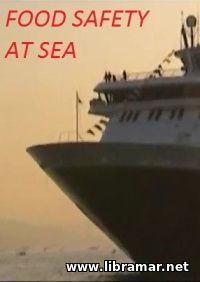 Seafarers, wherever you are in the world, whatever your nationality, rank, or type of vessel, you need to eat. On crew ships or ferries, the passengers will expect as a minimum high quality food and well-maintained restaurants and cafes. And a food everyone eats needs to be not only tasty but, above all, safe. If not, you, the crew, and passengers may suffer from food poisoning, become ill, unable to work or enjoy themselves and, in extreme cases this may be fatal.
Food areas on some ships are a distress. If food safety controls are poor, contaminated food may strike anybody anywhere with serious consequences. This set of video programs and the accompanying booklet shows the good practices that must be maintained to ensure wellbeing of all on board. The first part of the set is dedicated to the hazards and controls. With proper procedures in place, most hazards on board ship can be avoided, including those leading to food poisoning. Has the food been properly stored and prepared?
Was it prepared on a clean surface with clean utensils? Did the preparers wash their hands after using the toilet? If not, then anyone eating this food could be in serious trouble. It is everyone's responsibility to ensure standards are high and that starts at the top. Food poisoning can sometimes be a result of senior staff failing to identify hazards and taking the necessary steps to avoid them... We also recommend you to supplement the training with this booklet.
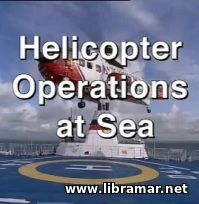 For vast majority of the seafarers the closest they will come to a helicopter would be only during an emergency and such dramatic cases are rare since most vessels do not encounter choppers on a regular basis or frequently. But note that there are so many locations where the helicopters are normally used for routine operations twenty-four hours a day.
Often, such tasks involve journeys to and from specialized ships, oil and gas platforms and other offshore installations, moving cargo and personnel quickly and efficiently. Thus, it is critically important for the seafarers to be fully aware of all established safe and effective working practices so that they can to apply this knowledge if necessary.
The present video is covering basic helicopter safety for the seafarers boarding the helicopter, helideck and ship preparations to ensure due communication, and some of the operational and safety procedures in place. It will show you what happens and what you shall do during helicopter operations at sea.
Despite their truly perfect safety record, helicopters are still dangerous machines. So, let us concentrate on the precautions seafarers must take on board and what they can expect to happen during the journey. First, the own responsibilities of the passengers...
 This video produced and released by Videotel is devoted to the safety in the confined spaces. It will demonstrate the effective rescue techniques to be used. Taking into account how hazardous working in the confined space may be and how important it is for the crew to be duly aware of the rescue techniques that may eventually help to save human life, we highly recommend this video to be watched by every single person working or intending to work on board any vessel or offshore installation.
In fact, people working ashore and involved in the activities within enclosed spaces are expected to have equal level of safety awareness so this video will be helpful to literally anyone. This training film will provide all of them with the required knowledge of how to perform rescue operations should the situation necessitate their direct and immediate involvement.
The mariners and other workers of the marine industry whose job implies occasional or regular working in the confined spaces will know how to rescue a human from the confined space in a safe and efficient manner. Such training should be an integral part of any familiarization of the newcomer on board since it directly affects human safety. The instructions are straight and clear, it makes them easy to remember and follow.
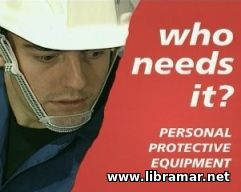 The present video training program was prepared to encourage crew members to use the PPE, i.e. personal protective equipment, and to use it properly. The authors have tried to stress that the safety is actually a matter of personal responsibility. Each person on board shall use established safe working practices, and one of them includes using the personal protective equipment.
Using defective or inappropriate PPE may eventually result in hazardous situation and in fact is as dangerous as not using any PPE at all. We shall all understand that the PPE is there for the reason - it is intended to save lives and cannot be ignored or undervalued since the consequences can be really tragic. The personal protective items commonly used on board vessels and offshore installations would normally include head protection, i.e. helmets/hard hats, arm and hand protection, ear and eye protection, coveralls protecting the body, respiratory protection, safety harnesses used when working at heights, foot protection - books with steel toe and appropriate isolation etc.
Every single person on board shall be fully aware of the proper usage of all items above and keep their PPE duly maintained, in good order and readily available at all times. The video will show them how to perform periodical checks of PPE and recognize the defects, and what to do if the defect is revealed...
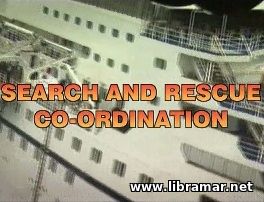 The content of this video training program is featuring the reconstructions of the real events that occurred at sea - they were taken from the SAR incidents and demonstrate how important it is to have clear and thorough understanding of the correct procedures. Subject understanding and due awareness of the procedures and techniques may be critical in the event of disaster.
The program demonstrated the correct search and rescue, i.e. SAR procedures, following the events from the moment when the initial distress call was sent via the vessel's GMDSS and up to the final arrival of the rescuers. The trainees will see how following the guidelines of the codes of practice and proper co-ordination of all agencies involved contribute to a desired favorable result. They will get to know how to perform communication with rescue centers and how the vessel can assist MRCC in case of a distress situation. The possible role of the others vessels responding to the distress call have also been covered.
The GMDSS-covered ocean areas have been shown, together with the use of the satellite- and radio systems via DSC. The video is also showing how EPIRBs can help to search for humans at sea and save lives of the crew members, especially in harsh weather conditions making SAR operations much more difficult. This training is essential for every person on board as directly affecting safety of human life at sea which is a matter of top importance.
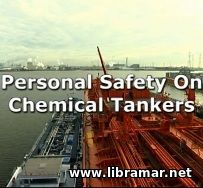 The chemical carriers are considered very technically sophisticated and complicated vessels with demanding cargo transfer operations. These vessels normally carry so many different cargoes on each of their voyages, and each of the chemicals transported represents a potential threat to the safety of the people on board.
The present video training is intended to emphasize the fact that the most efficient and important defense against personal injury is keeping to the established and proven procedures of all cargo operations. The content is divided in seven sections covering the preparation for the operations, loading, discharging and cleaning operations, engineering activities, entry to the confined spaces, further hazards to take into consideration, and managing chemical carriers.
In addition to the above, this training video features several case studies of the real life incidents that demonstrate what can occur if proper procedures are not followed. The cargoes transported by chemical tankers can be flammable, toxic, corrosive and asphyxiating. The intention of the authors of this video was to show the importance of having clear understanding of all hazards involved and of the protective equipment that is required. And the most important would be to know the vessel and to keep to the procedures...
 An excellent training video supplementing the associated training booklet. Imagine that is it very cold and wet, the surface under your feet is extremely slippery and the order has been given to abandon the vessel. Once a human is immersed in cold sea water, they get shocked and start to breathe much more rapidly - this is happening automatically and is in fact uncontrollable response to the situation.
Though this normally happens not more than couple of minutes, a person shall hold a head above the water as otherwise the water may be breathed. The next stage would normally be cooling of the limb musculature occurring during first thirty minutes spent in the sea water. The strength is getting lost which prevents the human from grasping a line or hanging to something that could let him or her stay on the surface...
The immersion suit is considered critically important p[piece of personal lifesaving equipment - wearing a properly maintained immersion suit can actually save life because it allows to keep the body warm. And, if the immersion suit is worn together with the lifejacket, such combination will contribute to the significant extension of the survival time. These suits are also widely known and referred to as abandonment/survival suits. Have a look at both video and booklet and get yourself duly familiarized with the types, working principles and putting on the immersion suits.
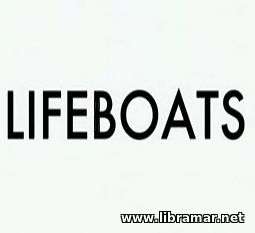 The present training series has been originally developed to supplement the content of the personal survival manuals of the vessels including the training manual under Chapter III of SOLAS Convention and requirements of STCW Convention. This video deals with lifeboats while three other video films are dealing with liferafts, mustering and survival & rescue.
We highly recommend all our users to watch very carefully all of the parts of this series and also consult the wordbooks and training manuals available on board specific to their particular vessel. The video covers all types of lifeboats normally used on the vessels. It starts with the information about the most popular enclosed type lifeboats demonstrating how they should be launched and how the whole process of abandoning the ship should be arranged.
The other types addressed are partially enclosed lifeboats, open type lifeboats and of course free-fall type lifeboats. The specific features of each type of boats have been dealt with together with the recommended procedure for maintenance of the boats and systems on board. Do not wait until the real emergency is there as it may get to late. You should take absolutely every single opportunity to participate in any available training courses and other activities including onboard drills.
|







